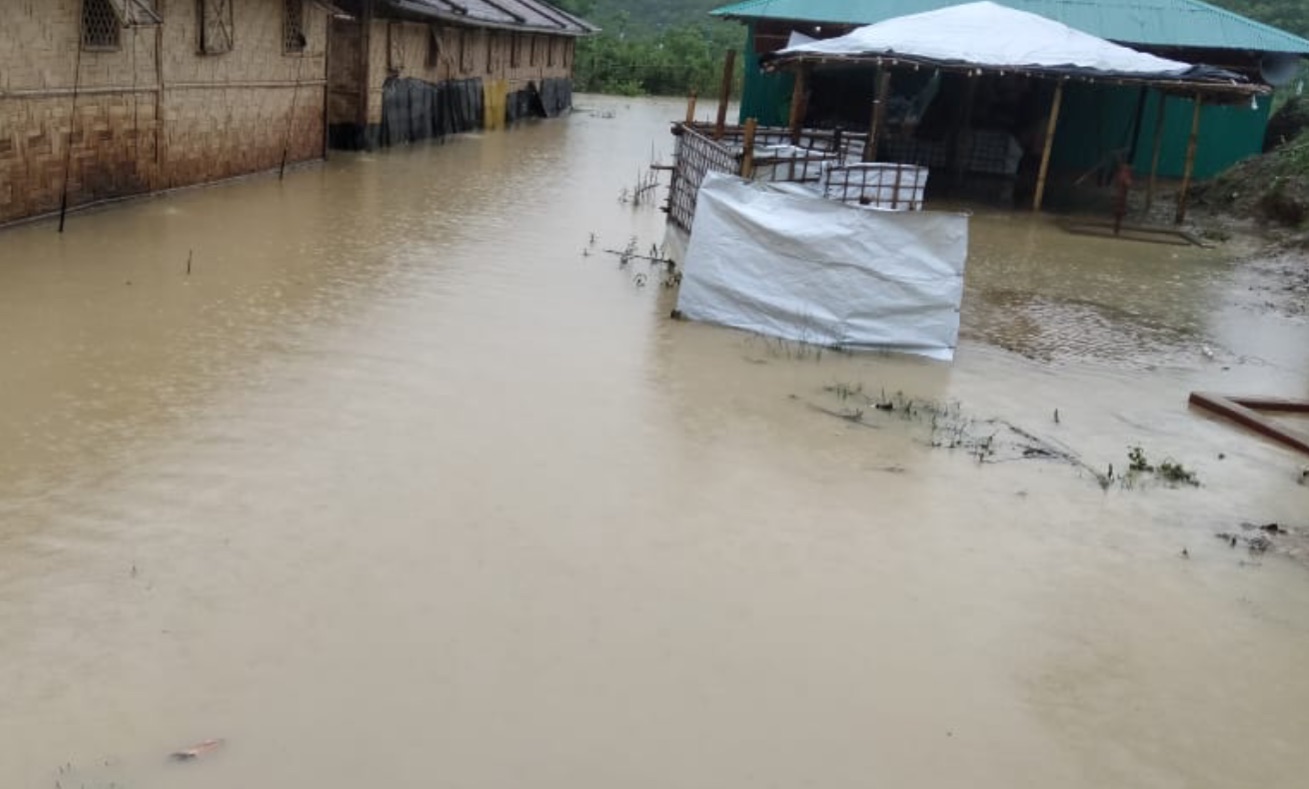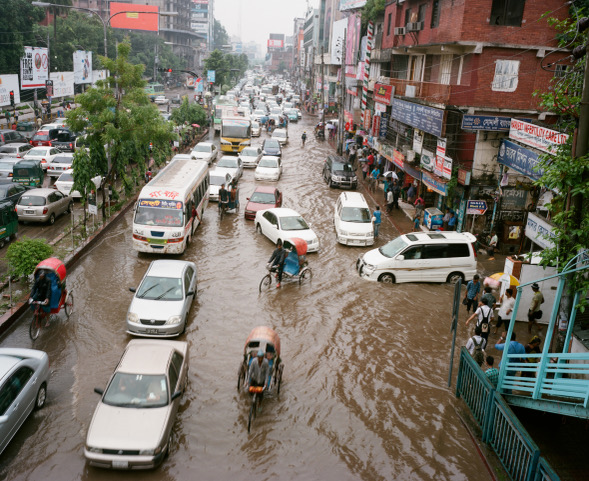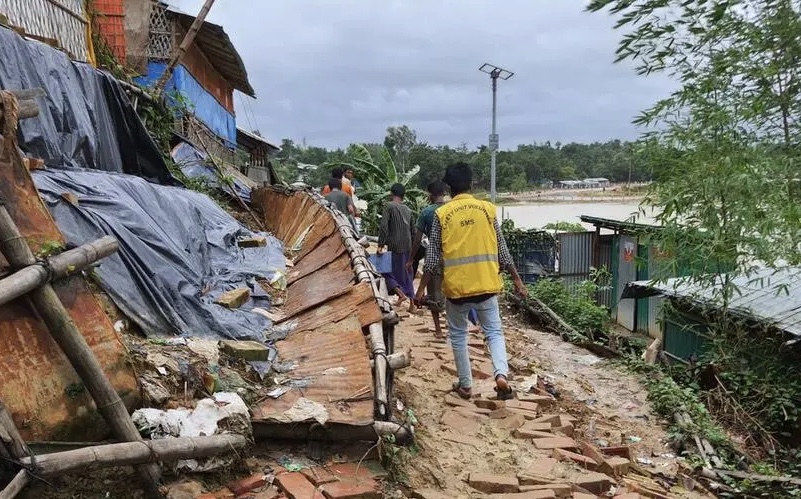Seven people so far are reported to have perished in the floods
On Tuesday 8th August, heavy rains, the resultant floods, tidal surges and land slides, have devastated the fragile infrastructure of the Rohingya refugee camps in Cox Bazaar, Bangladesh, costing the lives of at least seven people and reeking destruction to over 2,000 shelters, health centres and community centres.
The community centers are often a life-line for many in the camps as they provide safe space for people with special needs, pregnant women, older people, and children. They also provide psychosocial support, protection, and regular provision of essential hygiene items.
The Camp is home to over 1,000,000 Refugees who fled persecution in Myanmar and are now without food and fresh water
Human rights groups report that 4 of the seven killed were Rohingya refugees from inside the camp – which has been a home for over a million Rohingya refugees, most of whom fled persecution in Myanmar in August 2017, following a military led programme of rape, killing and ethnic cleansing. Reports suggest that as many as 15,000 Rohingya and 300,000 people from nearby communities have been displaced from their homes as a result of the flooding, which has impacted on villages and cities in the surrounding areas, across south east Bangladesh – especially among those who live in the remote, isolated Chittagong areas, home largely to indigenous tribal residents. All those affected across the region have been left without food and fresh water.
The army has been deployed to assist local initiatives, but flooded roads make access almost impossible
The army has been deployed to assist local government initiatives to try to provide emergency assistance, but these attempts have been hampered by the fact that there is no electricity and contact by road, due to the flooding, is virtually impossible.
The Floods are a recurring problem each year in the monsoon season, yet there are no long term remedies implemented
The Bangladesh Director of International Rescue Committee, Hasina Rahman, spoke of the particular vulnerability of the refugees in a camp, which faces similar problems each year during the monsoon season, but has remained substantially under resourced and without proper risk assessment. She said:
‘The present situation underscores the urgent need for long-term solutions to address the vulnerability of Rohingya refugee camps in Cox’s Bazar. This includes comprehensive disaster preparedness, infrastructure improvements, and sustainable measures to safeguard the lives and dignity of these displaced communities’
In response to what she regarded as a failure of the Bangladesh state and the international community to provide adequate protection for the vulnerable inside the camps, she added:
‘Time and again, we have highlighted the vulnerability of Bangladesh to climate change, as extreme weather events are becoming more frequent and having increasingly more devastating impacts on refugees and the local communities. These events are becoming all too predictable, and it is becoming more likely that we will see more loss of life in the future’

International Aid organisation, CARITAS, an NGO which has been working in the region for years, say they have witnessed a tragic repeat of the devastation caused by floods each year, in a camp where houses are built of bamboo and tarpaulin and positioned on sandy hills which are naturally fragile in the pouring rain. They say:
‘Families are exhausted and emotionally vulnerable after having to face multiple disasters… the Rohingya refugee crisis has mostly been forgotten. The Government of Bangladesh is constantly striving for a solution, but foreign political and economic assistance is urgently needed for a long-term solution’

On Friday, just days before the flood hit the refugee camps in Cox Bazaar, the continual rainfall caused severe flooding in Bangladesh’s capital city, Dhaka, as roads became inundated with water – which according to reports was knee deep in many parts of the city. Road vehicles were suddenly submerged in water and rendered dysfunctional. Houses, warehouses, business premises were also inundated.
Last year in May 2022, Bangladesh was hit by one of the worst floods in decades, displacing and rendering homeless, millions of residents of Sylhet and Sunamgani. Yet despite millions of pounds of emergency assistance pouring in from the international community, the underlying problems remain the same.







